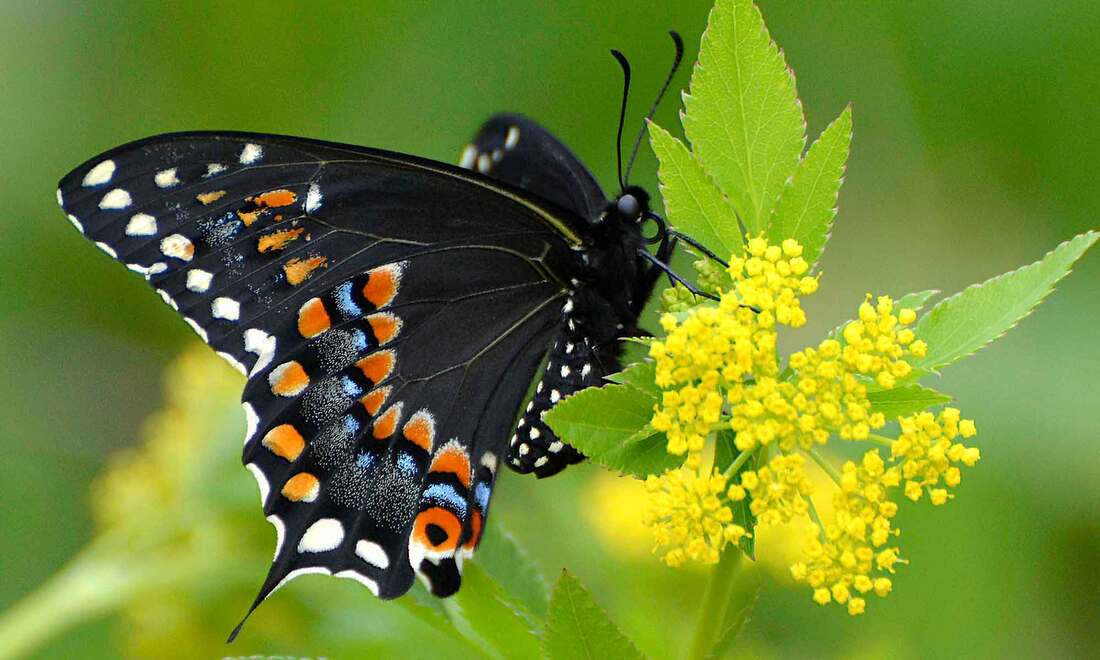Nickname: Fennel Fiend
Motto: Keep Calm and Carrot On
Superpower: Built-in pepper spray!
It’s easy to confuse the spicebush swallowtail with the black swallowtail (Papilo polyxenes) as both species have dark forewings and iridescent blue on their hindwings. However, Black Swallowtails are readily distinguished by the bold yellow band that parallels the row of marginal yellow spots on both fore and hind wings.
Also, while the larvae of our Spicy friend prefer spicebush as a host plant, the black swallowtail comes into our gardens to lay its eggs on carrots, dill, parsley and other members of the Umbelliferae family. At the SBG, bronze fennel is a favorite.
And while spicebush caterpillars have distinctive fake eye spots to ward off predators, black swallowtails have an equally ingenious defense mechanism. The osmeterium is an organ attached to the back of the caterpillar’s head that mimics the forked tongue of a snake. When the caterpillar is disturbed, the osmeterium extends and releases a foul-smelling chemical repellant. Harmless to humans, it sends common insect predators packing in a hurry!
Author: Lisa Schneider


 RSS Feed
RSS Feed